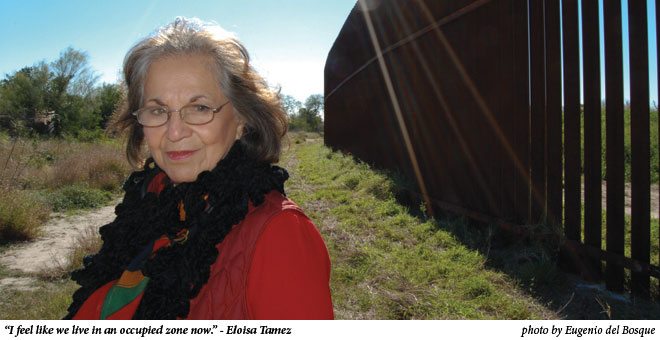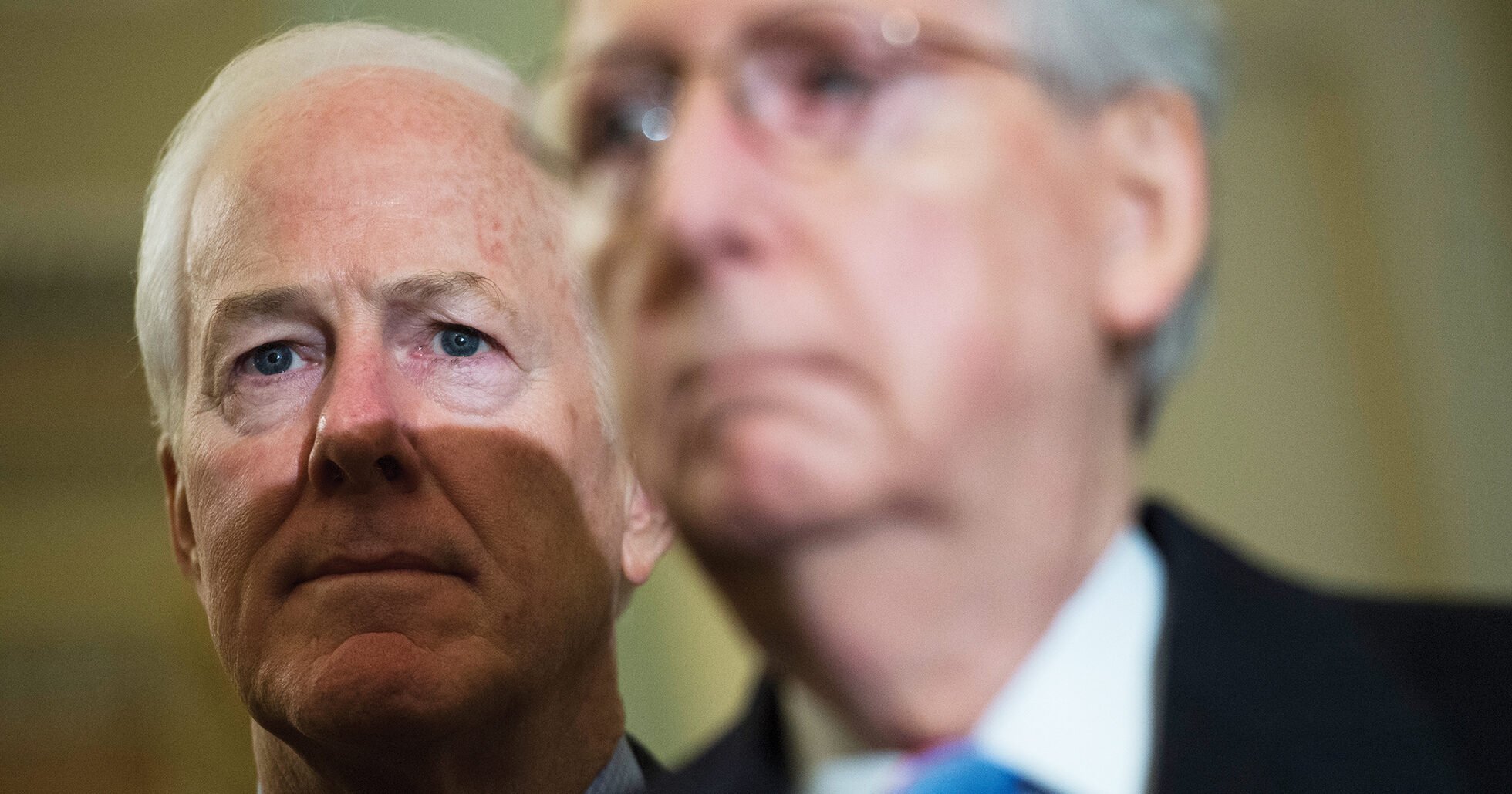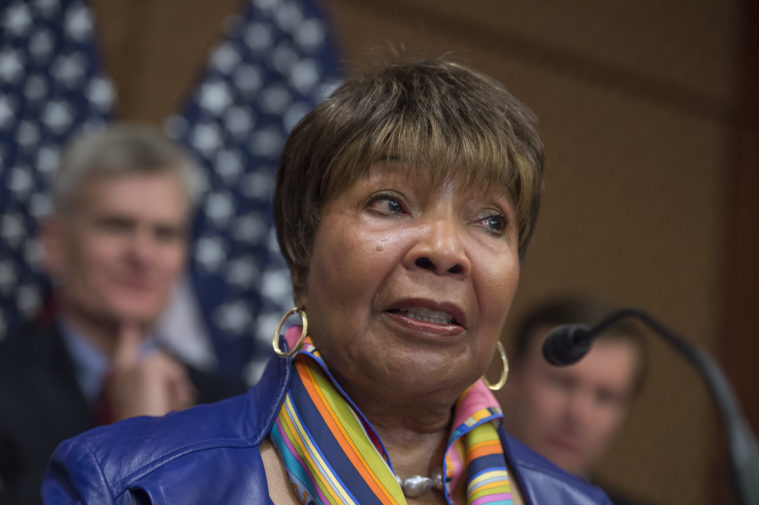
Border Residents Disappointed by Fence Provision in New Immigration Reform Bill

The so-called “Gang of Eight,” a bipartisan group of U.S. senators, released their much-awaited comprehensive immigration reform bill late Tuesday. It’s thrilling to finally see a reform bill which looks like it has some momentum come out of Congress—until you see the first section devoted to border security, which is like a kick in the gut for border communities.
Get ready for more fences, more invasive surveillance and more “boots on the ground.”
The bill appropriates $1.5 billion for the “Southern Border Fencing Strategy” to identify where fencing, including double-layer fencing, infrastructure, and technology would be deployed along the Southern border.
Here we go again. For anyone who has closely followed the building of the border fence in Texas, this is an immediate red flag. Landowners like Brownsville resident Eloisa Tamez have been fighting the condemnation of their land since 2008. Much of the unfenced land left along the southern border is in Texas and it is owned by private landowners.
The proposed fencing means another round of land condemnations and costly court battles for landowners and business owners. Since 2007—when the Department of Homeland Security first started land condemnations under the 2006 Secure Fence Act in Texas—the agency has never adequately explained the decision-making process that determines where the fencing is built. And border residents say DHS seldom confers with communities before they start building.
Even worse, the immigration status of millions will hinge on the building of these border fences by the National Guard, as well as adding more drone surveillance to the border. And then finally a determination by a hyper-partisan Congress on whether the border is secure.
The bill creates a new class of immigrant called the “Registered Provisional Immigrant.” The bill says “RPIs” can travel outside of the country for up to 180 days a year and they can work. But it is a provisional status, presumably with even less rights than a Legal Permanent Resident status. According to the bill, immigrants cannot begin the process of becoming Legal Permanent Residents, (aka securing a green card) until the Homeland Security secretary submits a notice to Congress and the president that the Comprehensive Southern Border Security Strategy is “substantially deployed and substantially operational,” and that the Secure Fence Strategy is implemented and “substantially completed.”
This could take years. Government officials have been trying to form a coherent border security strategy ever since 9/11 with little success. The past decade is littered with ideas and technologies that were once touted as the latest and greatest only to be later scrapped because they didn’t work and cost taxpayers too much. For instance, the virtual fence project was canceled in 2011 because of cost overruns and technical glitches. The radar sometimes mistook desert brush for border crossers when it was windy. And when it rained, the radar often didn’t work at all. The whole experiment cost taxpayers $1 billion.
Kathleen Campbell Walker, an El Paso immigration attorney with the law firm Cox Smith, says she was disappointed to see the fence provision in the bill. “A lot of communities—like El Paso where I live—have found the border fence to be a very offensive symbol,” says “I’m sorry to see the building of a fence used as a prerequisite for immigration reform.”
Rio Grande Valley resident Scott Nicol, chair of the Sierra Club Borderlands Team, has been a steadfast opponent of building more fence, which he sees as environmentally destructive and an ultimately ineffective security tool. “If they’re talking about basing immigrant adjustment on the completion of the wall it’s going to take years because of the condemnations that will have to take place,” says Nicol. “The walls have already been built where it’s easy to condemn properties. They can destroy nature refuges without blinking because they’re on federal lands. But what’s left now is private property and most of it is in Texas.”
Even worse, he says, is that the walls are often ineffective. They clog with debris and flood communities or they fall over in flash floods. People can scale them with relative ease. “When the Gang of Eight was visiting Nogales they watched a woman climb the fence,” says Nicol.
For those already weary from fighting the U.S. government for their land for the past five years, the specter of another round of land condemnations is frightening. “My sense is that the government is plowing ahead on a security plan and the indigenous people in this community are still in the dark,” says Dr. Margo Tamez, daughter of Eloisa Tamez, who are of members of the Lipan Apache tribe.
As we spoke Tuesday, Margo said her mother was in federal court in Brownsville, still fighting to hold onto their property in El Calaboz, a tiny border community outside of Brownsville. The U.S. government is trying to take the land underneath the 18-foot border fence it already built in the middle of her property. They are offering the family $100. “We are subjected to decisions made from far away and not consulted about the things being done to our land,” says Margo, who now works as an assistant professor in Indigenous Studies at the University of British Columbia.
The comprehensive immigration reform bill is a hefty 844 pages. Many border residents are anxious to examine it in greater depth and weigh its impacts on their communities. “I’m still digesting this,” says Campbell Walker of the bill. “It’s going to be controversial and it still has a long way to go before it’s signed by the president.”


